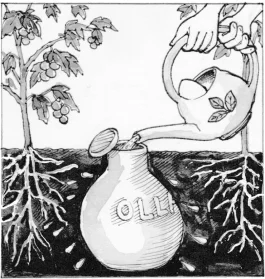
As an author, I often wonder what impact my years of research and writing will have. My wife has observed that it seems to take about 30 years for the world to see what I see. In 1986, for example, I started writing about building with straw bales—and this year straw bale construction is in the International Building Code.
But hey, just 30 years—what have I got to com-plain about?
Consider Fan Shengzhi, a remarkable Chinese agronomist from over 2,000 years ago. In about 10 B.C., Emperor Chengdi sent Fan Shengzhi to Sanfu to learn how to improve yields for resource-limited farmers. Fan had practical experience in agriculture, was honored as a master teacher, and was a skilled observer, interviewer, and researcher. He traveled extensively talking to farmers. After gathering all his information, he prepared a manual on high-yield agriculture, with information on plowing, sowing, soils, fertilizer, grafting techniques, crop rotation, intercropping, multiple cropping, mixed cropping, buried clay pot irrigation, and fermentation for food storage. The book he assembled was probably the first complete scientific agricultural monograph in Chinese history—and considerably more sophisticated than contemporary Greek and Roman works.
Sadly, only fragments remain, but it is still useful today.
Fan’s approach was very scientific, discussing expected planting and harvest rates. He cited wheat yields of 1,000 pounds per acre. The U.S. did not reach comparable wheat yields until 1906, and consistent yields this high until the 1940s.
But the section of Shengzhi’s manual that captured my attention the most was his description of buried clay pot irrigation:
Make 210 pits per acre, each pit 24 inches across and 6 inches deep. To each pit add 38 pounds of composted manure. Mix it well with an equal amount of earth.
Bury an earthen jar of 1.5 gallons capacity [such as the GrowOya or Dripping Springs ollas] in the center of the pit. Let its mouth be level with the ground. Fill the jar with water. Plant four melon seeds around the jar. Cover the jar with a tile. Fill the jar to the brink when the water level falls.
At the time, I was working on desert restoration and dryland agriculture for the Drylands Research Institute at the University of California, Riverside. Intrigued, I soon had buried clay pots in the garden with a variety of crops. They worked even better than I expected. The slow flow of water through the clay walls is influenced by water use of the crop—becoming a very efficient demand-response system. I later went on to do much more extensive research with the pots and have never failed to be impressed. Thank you, Fan Shengzhi!
So, to my fellow authors, have hope! Perhaps 1,000 years from now someone will uncover an ancient GREENPRINTS, find a fragment of your story—and it will change their lives and help others around the world! ❖
David A. Bainbridge is the author of Gardening with Less Water: Low-Tech, Low-Cost Techniques ($14.95, Storey Publishing).


 Previous
Previous

